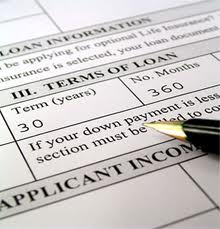 Access to student loans has been the path, and the only path, to higher education for many students, escpecially those who want to attend prestigious private universities. In 2008, 60% of college students carried some form of student loan and low-interest student loans from the federal government have been a huge source for funding; however, with the upcoming deficit reduction, this could be an area that is cut.
Access to student loans has been the path, and the only path, to higher education for many students, escpecially those who want to attend prestigious private universities. In 2008, 60% of college students carried some form of student loan and low-interest student loans from the federal government have been a huge source for funding; however, with the upcoming deficit reduction, this could be an area that is cut.
A good rule-of-thumb is to only borrow what you can earn your first year out of college. The following are some guidelines to help you figure out how much you can borrow:
Borrow Only What You Think You Can Pay Back
Sounds simple; it's not. Do you think you could pay back a house your first year out of school? Some students rack up that much in loans. Another general rule-of-thumb is to make sure your debt payments, which includes all your consumer loans, do not exceed 10% of your disposable (after-tax) income. So, let's say your salary is $32,000 and your take-home pay is $24,000, or $2,000 a month, then your debt payments shouldn't exceed $200 a month.
 Borrow Only To Meet Educational Needs
Borrow Only To Meet Educational Needs
Don't borrow for room and board, entertainment or travel. Budget for these items (hint: this will help you later in life) and only spend what you have. It might take having a job; jobs should be easy to find at fast-food restaurants or even on campus, like the student center. If anyone looks down at you for having a job, you can look down at them when you've paid off your loans quickly and they're only half-way through. Remember, you don't have to accept the full amount of the loan offered.
Borrow Only After You've Used All Your College Savings And Applied For Scholarships and Grants
Remember scholarships and grants don't have to be repaid as they're considered gifts. You can continue to apply for grants and scholarships after your Freshman year. Also, you can apply for federal student financial aid after January 1st of every year.
Borrow Only If You Plan To Stay Enrolled At Least Half Of The Time
If you drop below half-time, after a six-month grace period, you'll have to begin to repay your federal student loan. Be sure you understand the credit hour requirements at your school so you can stay above half-time status.
 Borrow Only If You Understand The Terms Of Your Loan
Borrow Only If You Understand The Terms Of Your Loan
As noted above, federal student loans give you a grace period of six months before you have to start to pay back your loans. This is also true in the event you drop out of school or take a year off.
Is your student loan approaching the value of a mortgage?
